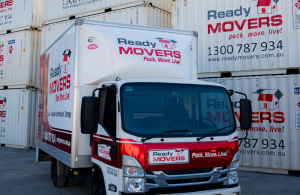Relocating to a new office can be exciting, especially if the reason for the move is business growth and expansion. But it can also be stressful. There are a lot of things to remember and no shortage of planning to do to make sure the move runs smoothly.
Corporate relocations are on the rise, with the recent increase in remote work and flexible shared spaces adding to the mobility of the modern workplace. The average company relocates every seven years for a number of different reasons. Sometimes, a rising business needs more space for new hires and additional inventory. Sometimes, the best place for a company to thrive is in a bigger area, with more new talent to choose from and more facilities nearby. Relocation can also enhance your brand image and give you the opportunity to streamline your work practices or take stock of your safety measures.
Whatever the reason, it’s useful to know how to relocate an office before you attempt to make a move. Learning to manage an office relocation comes with specific challenges besides the usual packing, planning and hauling that are part of any move. You need to minimise downtime and disruptions while shifting from one spot to another so you don’t lose out on necessary revenue during the process.
Here is the Ready Movers guide to how to relocate an office: what to prepare, what to plan for, the benefits, and how you can take the stress out of it.
How to Prepare For an Office Relocation
Good preparation starts months before you shift your first piece of furniture out of your current location. Here is how to manage an office relocation in the beginning stages so you can have a clearer run down the line.
Plan early
For best results, start preparing at least six months before your move date. Just like moving house, the sooner you start planning, the better prepared you’ll be.
Review your current lease
The itinerary starts with reviewing the lease for your current location to check for clauses and conditions. This document contains terms and conditions such as lease terms, exit clauses, and notice requirements.
Designate an in-house moving team
Different members of your team have different strengths, and that’s just as true when it comes to moving as it is the rest of the time. From packing and unpacking to planning and organising, there are many tasks you can delegate to competent staff members.
Make a decommissioning plan
Decommissioning goes beyond just organising a good bond clean (although that’s important too). It involves basically returning your office to its original condition before you moved in: removing electrical installations and cables, repairing damage to the property and any other requirements your lease lays out.
Set a budget
Establish a budget for the whole relocation that sets out costs for everything from moving equipment to upgrades. Even if you find you have to go over it, a budget will give you a clear idea of what you can scale back on and what’s non-negotiable.
Choose a new location
Your new location should suit the needs of not only your current business but also the business you’re becoming. Consider factors like size, location, amenities, and proximity to public transport.
Decide on moving companies
To find the right moving company to work with, get referrals, read reviews and check their professional accreditations. A good rule of thumb is to get at least three quotes from moving companies in your area to ensure you have options and are paying a fair price.
Announce to employees
Make sure all staff members are aware of the new address, the moving date, the reason for the move and other crucial factors. One effective approach is to send an email and follow it up with organising an online or in-person meeting.
Notify stakeholders
In addition to keeping your employees in the loop, inform your suppliers, clients, and other stakeholders about the details of your move. Also, remember to inform your IT and communications providers.
Plan layout of new office
Before you move into your new office, draw up a plan of the proposed layout to make sure you’re maximising functionality, accessibility, available space and comfort.
Conduct inventory
Look through your workplace items and equipment and take stock of what you need to keep and what you can dispose of.
Update your documents
Make sure you update your business address on legal documents to ensure compliance.
Label and pack items
Packing and labelling are essential aspects of being organised for any move, reducing clutter as you go.
Key Considerations for Moving Offices
When you’re assessing how to relocate your office, there are some factors you can’t afford to ignore.
Space issues
Evaluating your new office space early lays the foundation for a seamless move. Make sure your new space is large enough to meet your current and future needs, leaving enough room for workstations, meeting rooms, accessibility measures, and potential future renovations.
Legal issues
There are many legal issues to consider when moving offices: reviewing existing leases, business permits and licences, zoning, insurance, tax considerations and data privacy, among others.
IT infrastructure
There are steps you should take to secure your IT data and help keep the transition smooth: backup all data, hire IT experts to disconnect and reconnect your services, and have contingency plans in place, such as extra hardware and IT support when necessary.
Equipment and furniture
Furniture and equipment are another essential aspect to consider when moving. Relocating your office is a chance to decide which furniture to hold onto and which can be disposed of, and what kind of layout best maximises the space in your new location.
The Benefits of Hiring a Professional Removalist for an Office Relocation
There are some irreplaceable benefits that come with hiring a professional to help you relocate your office, including:
Professional experience and expertise
Professional removalists have the skills, knowledge and training to handle the entire process of your move from beginning to end.
An efficient system
Professional removalists use quick and organised methods of working in order to complete the job in less time than your average untrained person. They’ve had time to optimise and perfect their ideal way of working.
High-quality equipment
Professional removalists have access to all the dollies, straps and packing materials necessary to handle all your items, including particularly heavy or fragile ones.
Knowledge of logistics
Removalists have an in-depth knowledge of the area you’re in and the area you’re moving to, as well as knowledge of how to move efficiently.
Tailored services
A removal company can adjust their services to meet your specific needs, whether you need a full-service move or just help shifting one object.
Accountability
Removal companies have reputations to protect and face consequences for damage to your items or property. This accountability incentivises them to go the extra mile to protect your stuff in any way possible.
Take the Hassle Out Of Your Office Relocation with Ready Movers
No matter how near or how far you’re moving, from across the street to a whole new city, Ready Movers can take the stress out of your relocation. Our office removalists are the movers of choice for many successful businesses, and you can trust us with relocations large and small.
When you choose Ready Movers, our trained professional staff provides an onsite inspection and quote followed by a full pack and move service. We also provide specialised equipment like dollies, office moving trolleys, monitor trolleys and tailgate lifter trucks.
Our office removalist services can include a free on-site visual inspection to assess your move requirements, a free written quote with a fixed price, packing and unpacking services, boxes and other materials, and a fully trained team that can handle wrapping and packing, even if you only have a small set-up (or aren’t moving very far).







